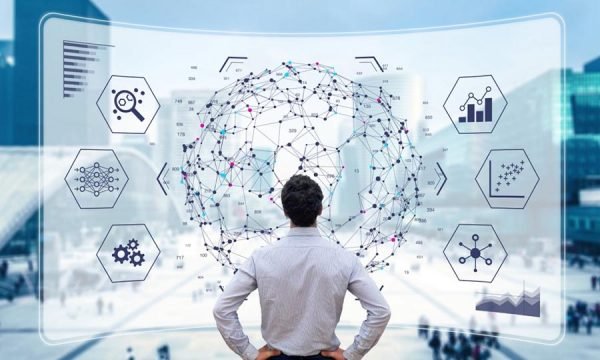The emergence of the Internet of Things (IoT) represents one of the most rapid and fascinating advances in information and communications technology (ICT).
The Internet of Things (IoT) effortlessly intertwines the digital and physical realms to establish a network of interconnected devices that communicate and exchange data. This revolutionary paradigm shift has introduced an era where lifeless objects become intelligent, enhancing efficiency, automation, and convenience across various industries. Consult with Manufacturing IT Support experts to leverage the power of IoT in the manufacturing industry.
This article will explore the importance of IoT and the different internet of things types.
Table of Contents
Why is IoT Important?
The Internet of Things (IoT) has become increasingly important in today’s digital age. The Internet of Things (IoT) refers to the interconnected network of devices and objects that are embedded with sensors, software, and other advanced technologies. This enables them to efficiently collect and exchange data, paving the way for seamless communication and intelligent decision-making. This technology can revolutionize various industries, from healthcare and manufacturing to transportation and agriculture.
IoT enables real-time monitoring, automation, and data analysis by connecting everyday objects to the Internet, improving efficiency, productivity, and decision-making. IoT can optimize processes, reduce costs, and enhance customer experiences for businesses. IoT can also address pressing global challenges such as energy consumption and environmental sustainability.
How do IoT Devices Work?
IoT devices, or the Internet of Things, work by connecting to the Internet and communicating with other devices and systems. These devices are equipped with sensors, software, and connectivity capabilities that enable them to gather and share data. They can be controlled remotely through a smartphone or computer, and they can also be programmed to perform specific tasks or actions based on the data they collect.
IoT devices rely on wireless communication technologies such as Wi-Fi, Bluetooth, or cellular networks to connect to the Internet and transmit data. This data can then be analyzed and used to make informed decisions or automate processes in various industries, including healthcare, manufacturing, transportation, and more.
5 Types of Internet of Things (IoT)
1. Industrial Internet of Things (IIoT)
The Industrial Internet of Things (IIoT) is a specific type of IoT that focuses on integrating smart devices and sensors in industrial settings. It encompasses using connected devices, data analytics, and automation to optimize operations, improve efficiency, and enhance safety in manufacturing, energy, transportation, and agriculture industries.
The IIoT enables real-time monitoring and control of equipment, predictive maintenance, remote operation and management, and data-driven decision-making. By harnessing the power of interconnected devices and advanced analytics, the IIoT can revolutionize industries by enabling greater productivity, cost savings, and innovation.
2. Commercial IoT
Commercial IoT refers to using Internet of Things (IoT) technology in commercial settings, such as businesses, industries, and retail environments. This IoT type focuses on improving operational efficiency, enhancing customer experiences, and enabling data-driven decision-making.
Commercial IoT applications can range from intelligent buildings that optimize energy usage and automate maintenance tasks to supply chain management systems that track inventory and streamline logistics processes. Commercial IoT solutions can revolutionize various industries by providing real-time insights, increasing productivity, and reducing costs.
3. Infrastructure IoT
Infrastructure IoT is one of the types of IoT devices that is revolutionizing industries across the globe. It refers to implementing IoT technology in infrastructure systems such as transportation, energy, and buildings. Infrastructure IoT enables real-time monitoring, predictive maintenance, and efficient resource management by integrating sensors, connectivity, and data analytics into these systems.
For example, innovative city initiatives leverage infrastructure IoT to optimize traffic flow, conserve energy usage, and enhance public safety. With the potential to improve sustainability, productivity, and quality of life, infrastructure IoT is playing a crucial role in shaping the future of our cities and critical infrastructure systems.
4. Internet of Military Things (IoMT)
The Internet of Military Things (IoMT) is a specific subset of the Internet of Things (IoT) that focuses on using connected devices and technologies in military applications. IoMT encompasses a wide range of technologies, including sensors, drones, wearable devices, and surveillance systems designed to enhance military operations and capabilities.
By leveraging the power of IoT, the military can gather real-time data, improve situational awareness, and streamline communication and coordination among personnel. The IoMT has the potential to revolutionize warfare by enabling more efficient and effective decision-making processes, enhancing mission success rates, and improving overall operational efficiency.
5. Consumer Internet Of Things
Consumer Internet of Things (IoT) refers to the network of physical devices connected to the Internet and designed for consumer use. These devices, also known as smart devices, can range from everyday household items like thermostats and refrigerators to wearable technology such as fitness trackers and smartwatches. Consumer IoT devices enhance convenience, efficiency, and connectivity in people’s everyday lives.
They often feature capabilities such as remote control via smartphone apps, data tracking and analysis, and integration with other smart devices in a person’s home or personal space. The growing popularity of these devices has led to an increasingly interconnected world where consumers can enjoy the benefits of automation, customization, and improved quality of life through IoT technology.
The Bottom Line
The vast and dynamic landscape of the Internet of Things (IoT) encompasses a wide array of devices and applications transforming how we interact with our surroundings. The diversity of IoT is constantly expanding from wearable gadgets and smart home appliances to industrial sensors and healthcare monitoring systems. As technology evolves, new IoT devices and platforms will emerge, offering innovative solutions to enhance efficiency, connectivity, and overall quality of life. The key to navigating this interconnected world lies in understanding the diverse types of IoT devices and their respective roles in shaping the future of a connected digital world. For more information, contact the IT Support 24/7 experts.





